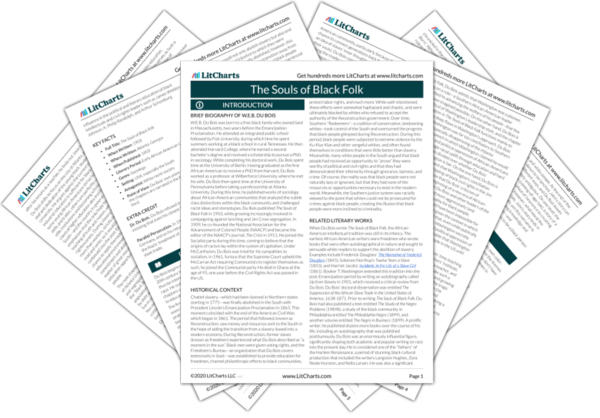The Veil is the most frequently mentioned symbol in the book, and one of Du Bois’ most important ideas. In some ways, it is possible to think of the Veil as a psychological manifestation of the color line. The color line exists in the world, defining people’s access to opportunities and to institutions from universities to bathrooms to the justice system. The Veil, on the other hand, exists in people’s minds, and compels white people to structure society according to a racist logic—to build and police along the color line. Du Bois argues that the Veil prevents white people from seeing black people as Americans, and from treating them as fully human. At the same time, the Veil in turn prevents black people from seeing themselves as they really are, outside of the negative vision of blackness created by racism.
According to Du Bois, the Veil is a constant presence, but not one that is felt all the time. It takes time for young children to realize the Veil exists, and it is for this reason that Du Bois feels a perverse sense of joy that his son died before he was old enough to perceive the Veil. In some instances, this innocent ignorance can last beyond childhood, as in the case of John Jones. It isn’t until John leaves rural Georgia that he truly feels the presence of the Veil. Through this example, Du Bois suggests that the Veil is felt less severely by those growing up within a segregated black community, or perhaps in contexts where they feel that racial inequality is a fundamental and permanent aspect of life.
The Veil Quotes in The Souls of Black Folk
Why was his hair tinted with gold? An evil omen was golden hair in my life. Why had not the brown of his eyes crushed out and killed the blue? –For brown were his father's eyes, and his father's father's. And thus in the Land of the Color-line I saw, as it fell across my baby, the shadow of the Veil.















